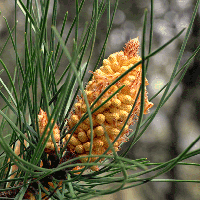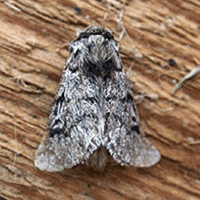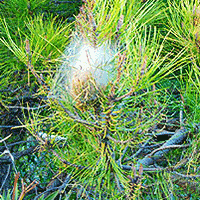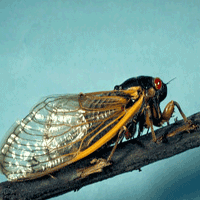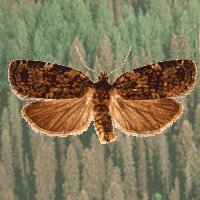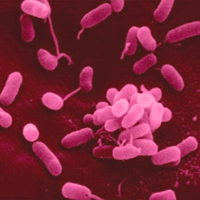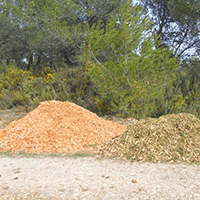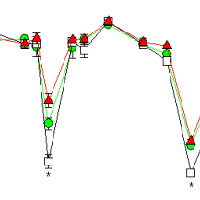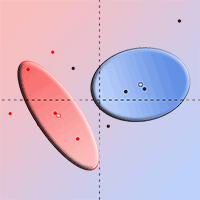
The impact of post-defoliation foliage of Pinus halepensis Mill. on the larval performance of Thaumetopoea pityocampa and its relationship with the tree-induced defense
Mouffek Guadguad (1) , Mohamed Sbabdji (1-2), Habib Mouissa (3), Farid Chebrouk (4)
iForest - Biogeosciences and Forestry, Volume 18, Issue 4, Pages 186-193 (2025)
doi: https://doi.org/10.3832/ifor4697-018
Published: Jul 01, 2025 - Copyright © 2025 SISEF
Research Articles
Abstract
Induced defense in trees refers to the increased production of specific substances in response to herbivore attacks, which negatively affects the herbivore. This type of resistance can contribute to the sustainable management of herbivorous insect problems in forest ecosystems. The Aleppo pine, a drought-resistant forest tree species, holds great ecological and socioeconomic importance. One of its predators is the Pine Processionary Moth (PPM) Thaumetopoea pityocampa. This study explores the impact of new foliage that emerges following severe defoliation caused by the PPM on the subsequent year’s larval performance. Moreover, we investigate whether there is a difference in the chemical composition of the foliage of defoliated and undefoliated trees in terms of terpenes (monoterpenes, sesquiterpenes, and diterpenes), total phenols, nitrogen (N), carbon (C), and the C/N ratio. The aim is to determine whether these components act as an induced defense mechanism. The results indicate that the performance of L1 larvae was negatively affected by new foliage after defoliation. Larvae feeding on new foliage experienced high mortality rates and were significantly shorter than those that fed on the foliage of undefoliated trees. The chemical composition analysis revealed that only the new foliage after defoliation contained bornyl acetate (monoterpene), and the concentration of p-cymene (another monoterpene) was higher in this new foliage compared to that of undefoliated trees. Furthermore, two diterpenes, methyl dehydroabietate and dehydroabietal, showed a stronger correlation with defoliation. These compounds have demonstrated insecticidal activity against other insects and could potentially serve as starting components for a bio-insecticide against the PPM. These findings suggest the presence of an induced defense in Aleppo pine, as the tree produces foliage containing specific terpenes that are unfavorable to larvae. This is one of the factors contributing to the reduction of the PPM population. However, due to the current climate change situation, further research is necessary to better understand how these conditions impact the susceptibility of trees to defoliation.
Keywords
Larval Performance, Induced Defense, Terpenes, Pinus halepensis, Thaumetopoea pityocampa
Authors’ Info
Authors’ address
Mohamed Sbabdji 0000-0002-1961-4219
Conservation, Management and Improvement of Forest Ecosystems laboratory, National Higher Agronomic School, El Harrach, Algiers (Algeria)
National Institute of Forest Research (INRF), El Hammamet, Algiers (Algeria)
Agricultural Sciences Department, Faculty of Natural Sciences and Life, Ziane Achour University of Djelfa (Algeria)
Scientific and Technical Center of Research in Physical and Chemical Analysis CRAPC, BP384, Bou-Ismail,42004 Tipaza (Algeria)
Corresponding author
Paper Info
Citation
Guadguad M, Sbabdji M, Mouissa H, Chebrouk F (2025). The impact of post-defoliation foliage of Pinus halepensis Mill. on the larval performance of Thaumetopoea pityocampa and its relationship with the tree-induced defense. iForest 18: 186-193. - doi: 10.3832/ifor4697-018
Academic Editor
Matteo Marchioro
Paper history
Received: Jul 27, 2024
Accepted: Mar 19, 2025
First online: Jul 01, 2025
Publication Date: Aug 31, 2025
Publication Time: 3.47 months
Copyright Information
© SISEF - The Italian Society of Silviculture and Forest Ecology 2025
Open Access
This article is distributed under the terms of the Creative Commons Attribution-Non Commercial 4.0 International (https://creativecommons.org/licenses/by-nc/4.0/), which permits unrestricted use, distribution, and reproduction in any medium, provided you give appropriate credit to the original author(s) and the source, provide a link to the Creative Commons license, and indicate if changes were made.
Web Metrics
Breakdown by View Type
Article Usage
Total Article Views: 5278
(from publication date up to now)
Breakdown by View Type
HTML Page Views: 1888
Abstract Page Views: 1918
PDF Downloads: 1398
Citation/Reference Downloads: 0
XML Downloads: 74
Web Metrics
Days since publication: 186
Overall contacts: 5278
Avg. contacts per week: 198.63
Citation Metrics
Article Citations
Article citations are based on data periodically collected from the Clarivate Web of Science web site
(last update: Mar 2025)
(No citations were found up to date. Please come back later)
Publication Metrics
by Dimensions ©
Articles citing this article
List of the papers citing this article based on CrossRef Cited-by.
References
Mechanisms of resistance in trees to defoliators. In: “Mechanisms and deployment of resistance in trees to insects” (Wagner MR, Clancy KM, Lieutier F, Paine TD eds). Springer Netherlands, Kluwer Academic Publishers, New York, Boston, Dordrecht, London, Moscow, pp. 76-105.
CrossRef | Gscholar
Contact toxicity and repellent efficacy of Valerianaceae spp. to three stored-product insects and synergistic interactions between two major compounds, camphene and bornyl acetate. Ecotoxicology and Environmental Safety 190: 110106.
CrossRef | Gscholar
Phytochimie et activités biologiques de Pinus halepensis de l’est Algérien [Phytochemistry and biological activities of Pinus halepensis from eastern Algeria]. PhD thesis, Université Farhat-Abbas Sétif 1, Faculté des Sciences de la Nature et de la Vie, Algérie, pp. 105. [in French].
Online | Gscholar
Insect-tree interactions in Thaumetopoea pityocampa. In: “Processionary Moths and Climate Change. An Update” (Roques A ed). Springer, Dordrecht, Netherlands and Quae, Versailles, France, pp. 265-310.
CrossRef | Gscholar
Chemical composition of essential oils from the leaves of Schinus molle and Cupressus sempervirens and their insecticidal activity against Oryzaephilus surinamensis (Coleoptera: Silvanidae). Journal of Essential Oil Bearing Plants 26 (2): 309-322.
CrossRef | Gscholar
Climate warming and past and present distribution of the processionary moths (Thaumetopoea spp.) in Europe, Asia Minor and North Africa. In: “Processionary Moths and Climate Change: an Update” (Roques A ed). Springer, Dordrecht, Netherlands, pp. 81-161.
CrossRef | Gscholar
Genetic and ecological basis of resistance to herbivorous insects in Mediterranean pines. In: “Pines and Their Mixed Forest Ecosystems in the Mediterranean Basin” (Ne’eman G, Osem Y eds). Springer, Cham, Switzerland, pp. 199-233.
CrossRef | Gscholar
Données sur la bioécologie, les facteurs de mortalité et la dynamique de populations de Thaumetopoea pityocampa Denis et Schiffermuller (Lep., Thaumetopoeidae) dans les pineraies subsahariennes de la région de Djelfa (Algérie) [Data on the bioecology, mortality factors and population dynamics of Thaumetopoea pityocampa Denis et Schiffermuller (Lep., Thaumetopoeidae) in the sub-Saharan pinewoods of the Djelfa region (Algeria)]. PhD thesis, Université de Rennes I, UFR Sciences de la Vie et de l’Environnement, France, pp. 247. [in French]
Gscholar
Mécanismes de régulation des populations de la processionnaire du pin Thaumetopoea pityocampa Denis and Schiffermüller (Lep., Thaumetopoeidae) en zone semi-aride (Algérie) [Population regulation mechanisms of the pine processionary Thaumetopoea pityocampa Denis and Schiffermüller (Lep., Thaumetopoeidae) in semi-arid zones (Algeria)]. Annales de l’Institut national de la recherche agronomique de Tunisie 6: 155-173. [in French]
Gscholar

